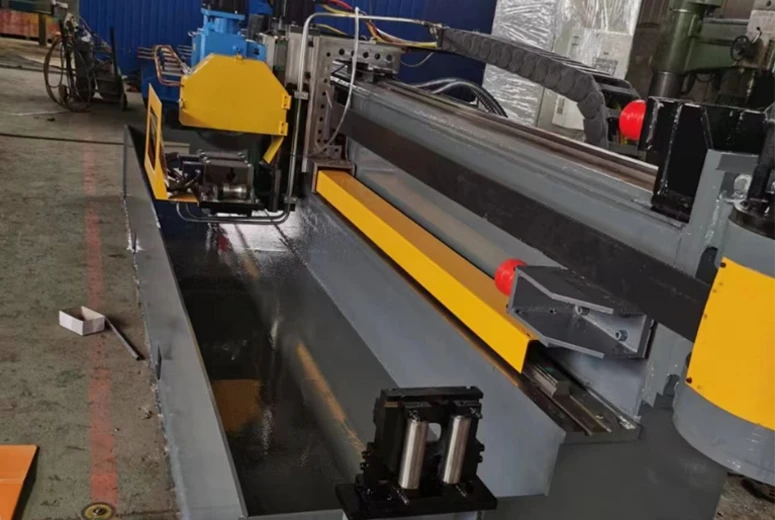Optimizing Machine Shear Processes for Enhanced Performance and Efficiency
Understanding Machine Shear A Key Process in Manufacturing
In the realm of manufacturing and fabrication, one of the essential processes that can significantly influence the quality and precision of products is machine shear. This industrial technique is widely used to cut, shape, and manipulate materials such as metals, plastics, and composites, making it a cornerstone in various sectors, from automotive to aerospace.
What is Machine Shear?
Machine shear refers to a mechanical process employed to cut materials along a straight line. This technique utilizes a pair of blades and a significant amount of force to shear the material, creating two distinct pieces. Unlike traditional cutting methods that may use saws or other instruments, machine shear is designed for efficiency, speed, and uniformity. It is particularly effective for sheet materials, where precision is vital.
The Mechanics Behind Machine Shear
The operation of machine shears involves two primary components the upper blade and the lower blade
. The upper blade (or moving blade) applies a downward force, effectively compressing the material against the lower, stationary blade. When the force exceeds the material's shear strength, it causes the material to fracture along the line of cut. The angle of the blades, the speed of the cut, and the type of material being sheared are crucial factors that influence the quality of the cut and the finish of the edges.Types of Machine Shears
Machine shears come in various forms, each suited to different applications. The most common types include
1. Guillotine Shears These employ a straight-edge blade that moves vertically against a fixed blade. They are ideal for cutting large sheets of metal and are often used in heavy-duty applications.
machine shear

2. Swing Beam Shears This type features a pivoting beam that allows for better control over the cutting process. They are versatile and commonly used for both thick and thin materials.
3. Hydraulic Shears Utilizing hydraulic cylinders to power blade movement, hydraulic shears offer significant force and precision, suitable for demanding tasks in heavy manufacturing.
4. Rotary Shears These use circular blades to cut materials in a continuous motion, often employed in applications where speed is essential, such as in the textile industry or for cutting thin sheets of metal.
Advantages of Machine Shear
Machine shear offers numerous advantages over traditional cutting methods. Its ability to produce clean, straight cuts minimizes the need for additional finishing processes, saving time and costs. The consistency of the cuts ensures that products meet strict dimensional tolerances, which is crucial in high-stakes industries like aerospace or automotive.
Moreover, machine shear is adaptable. By adjusting blade settings and configurations, operators can efficiently shear a variety of materials and thicknesses. This flexibility makes it an indispensable tool in modern manufacturing environments.
Conclusion
In summary, machine shear is a fundamental process in the manufacturing landscape. Its efficiency, precision, and versatility enable industries to produce high-quality components that meet rigorous standards. As technology advances, machine shear continues to evolve, integrating modern innovations such as computer numerical control (CNC) for enhanced accuracy and automation. Understanding this crucial process allows manufacturers to better appreciate its role in streamlining production and improving product quality in an increasingly competitive market.
-
High Frequency Straight Seam Welded Pipe Production Line-BzZhou Xinghua Machinery Equipment Manufacturing Co., LTD.|line pipe steel&welded gas pipeNewsJul.30,2025
-
High Frequency Straight Seam Welded Pipe Production Line-BzZhou Xinghua Machinery Equipment Manufacturing Co., LTD.|High Precision&Automated SolutionsNewsJul.30,2025
-
High Frequency Straight Seam Welded Pipe Production Line - BzZhou Xinghua Machinery Equipment Manufacturing Co., Ltd.NewsJul.30,2025
-
High Frequency Straight Seam Welded Pipe Production Line-BzZhou Xinghua Machinery Equipment Manufacturing Co., LTD.|Precision Welding, High EfficiencyNewsJul.30,2025
-
High Frequency Straight Seam Welded Pipe Production Line|BzZhou Xinghua|Precision Welding&EfficiencyNewsJul.30,2025
-
High Frequency Straight Seam Welded Pipe Production Line - BzZhou Xinghua|Precision Engineering&EfficiencyNewsJul.30,2025


